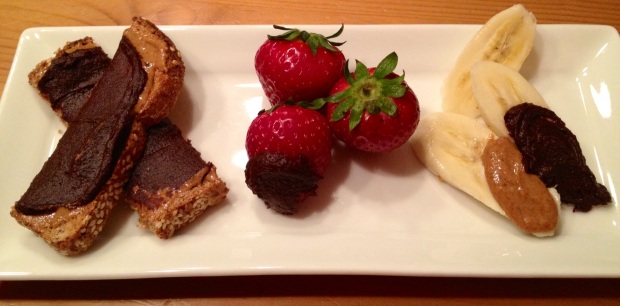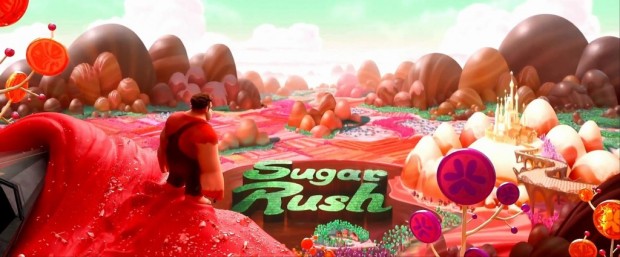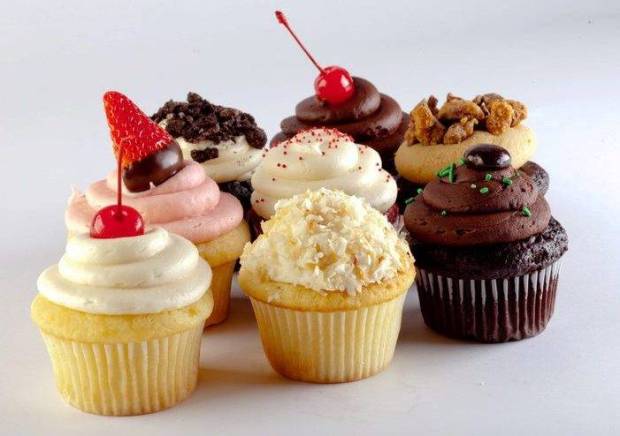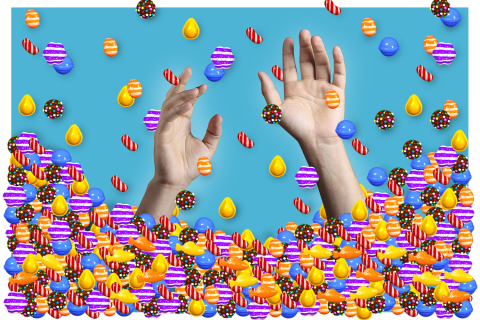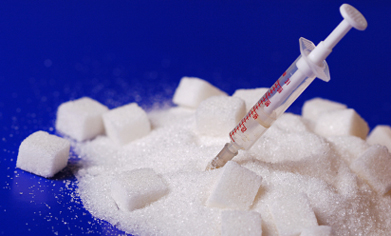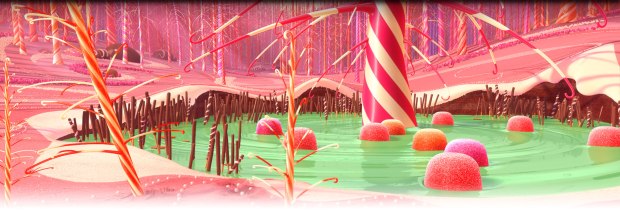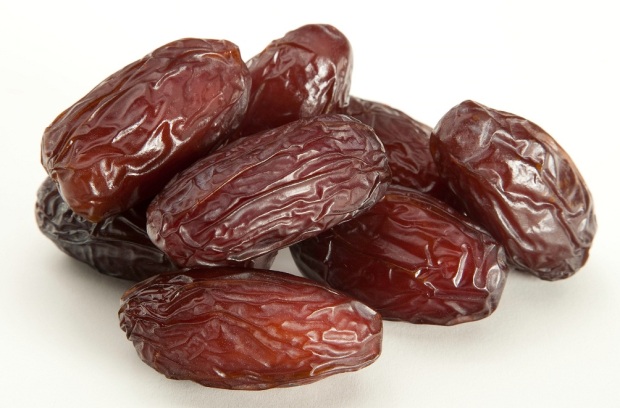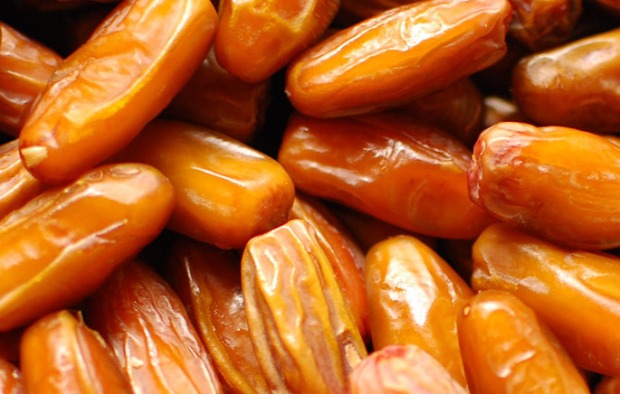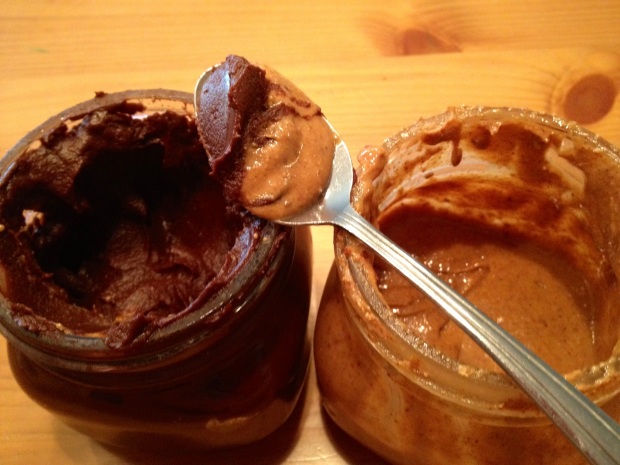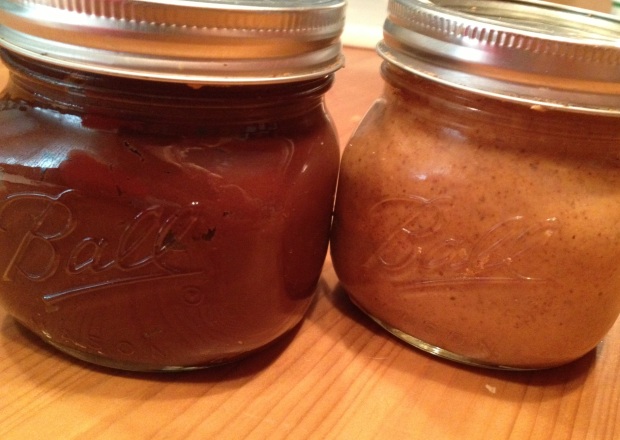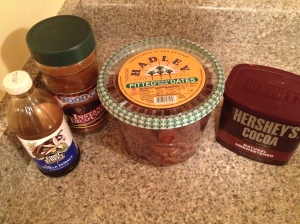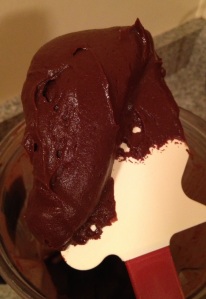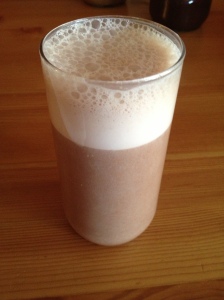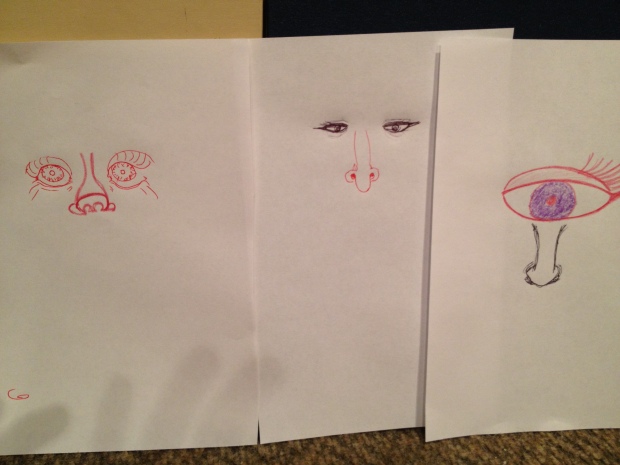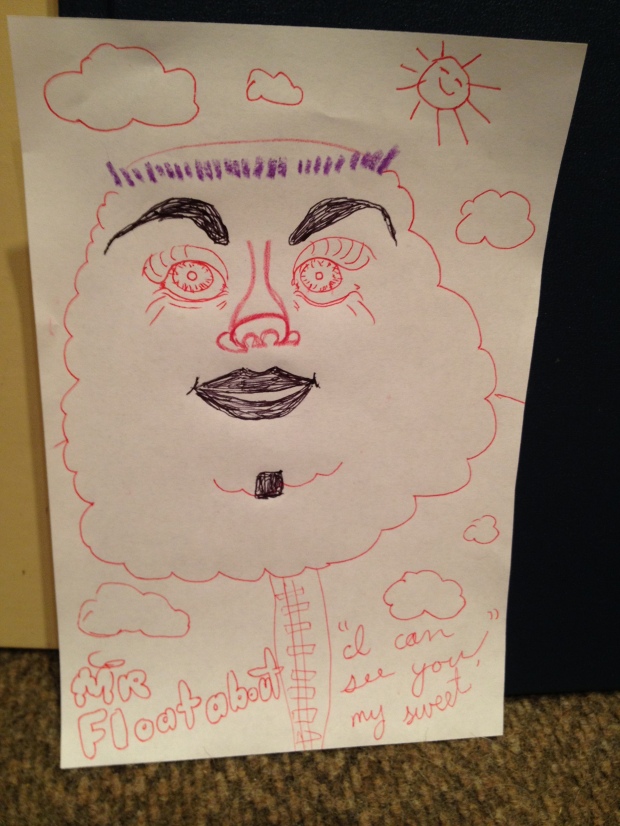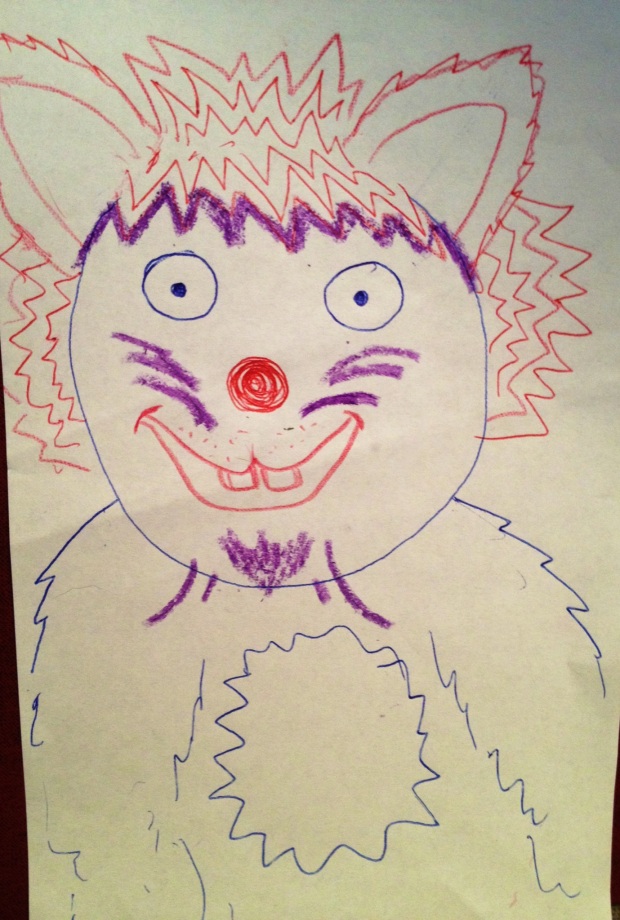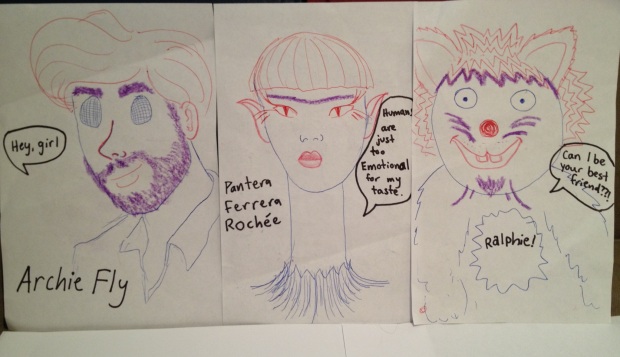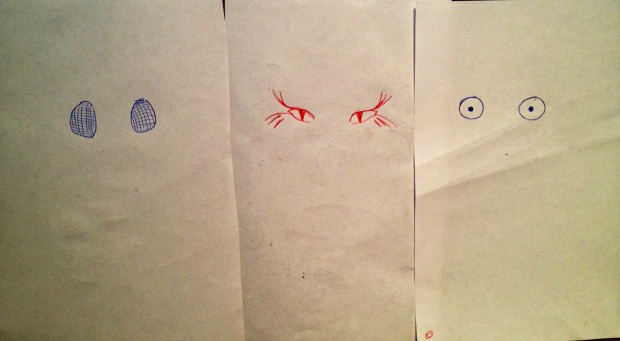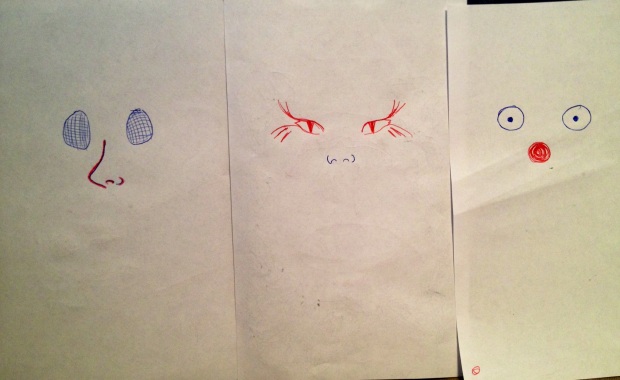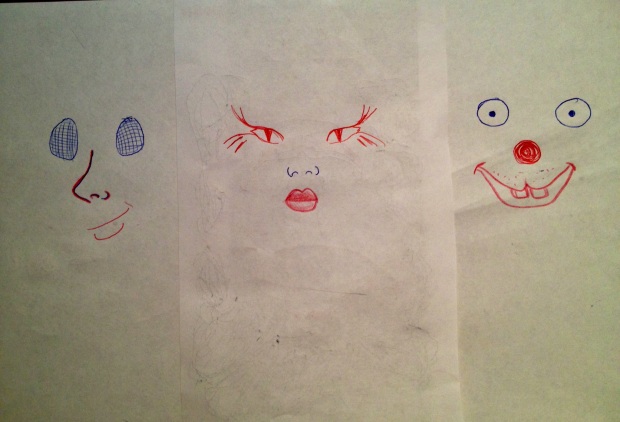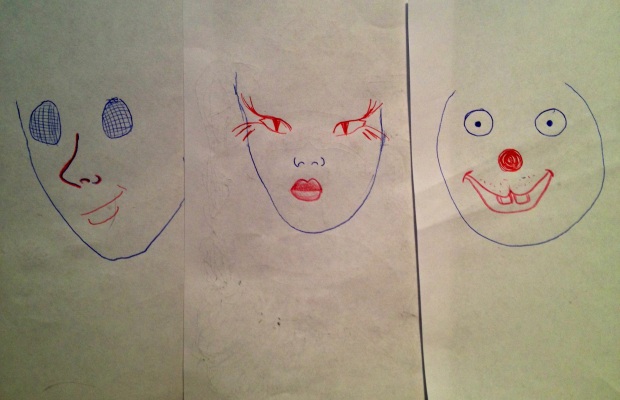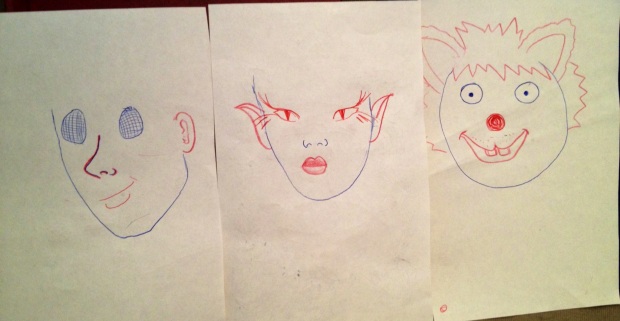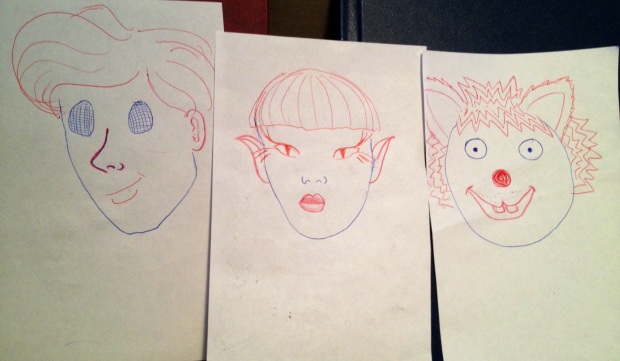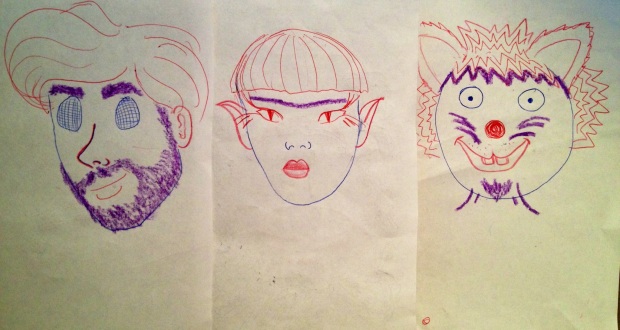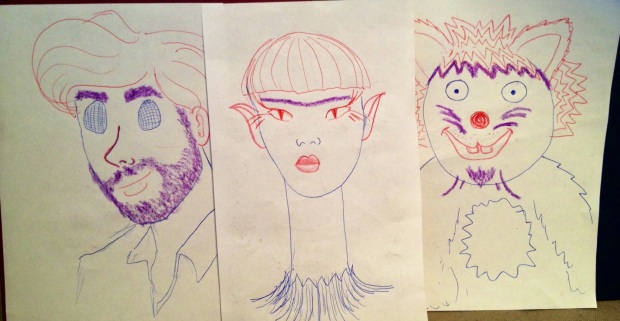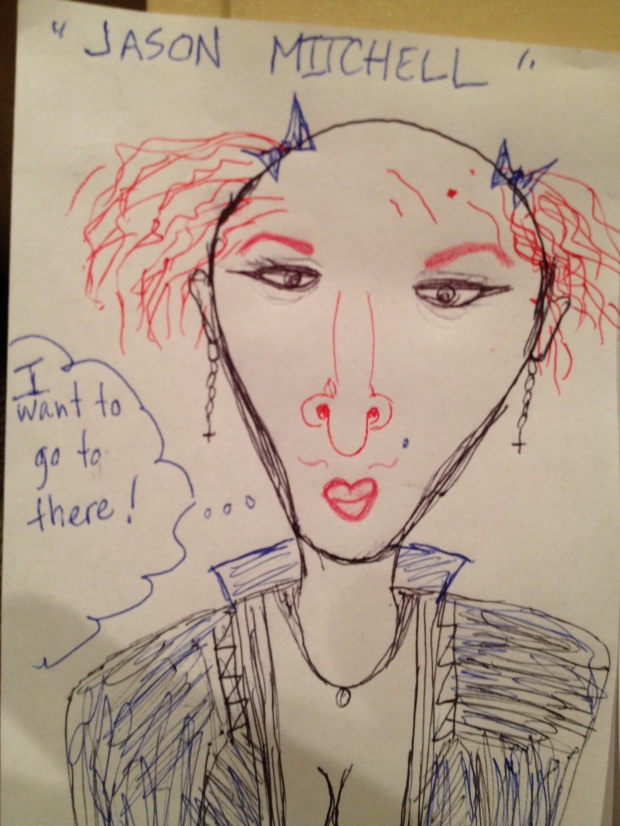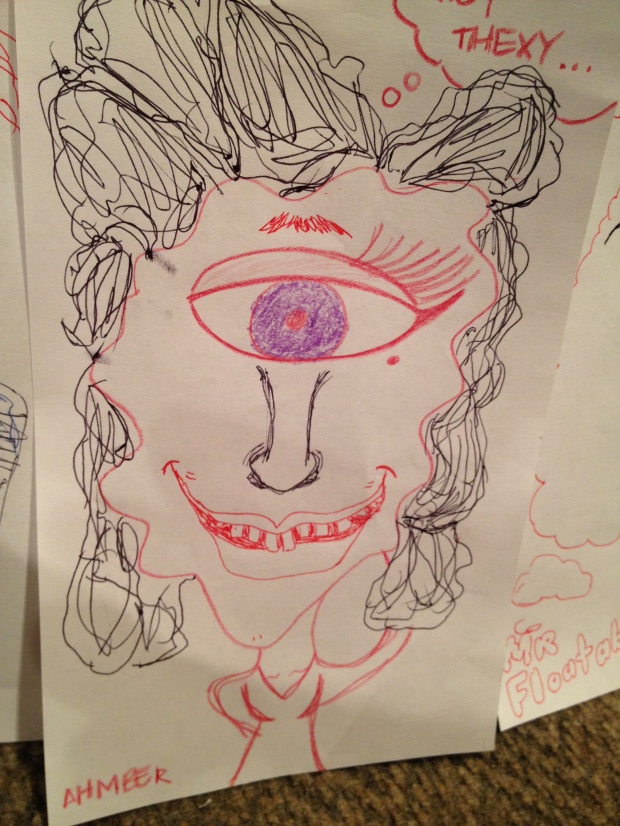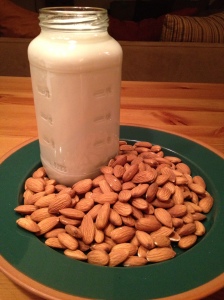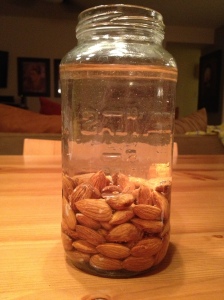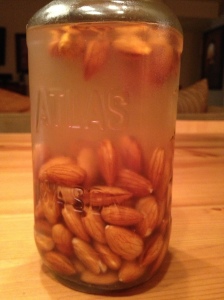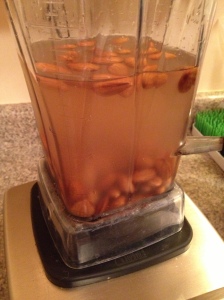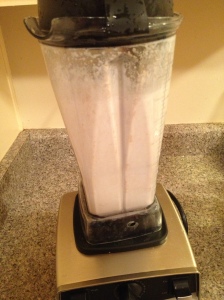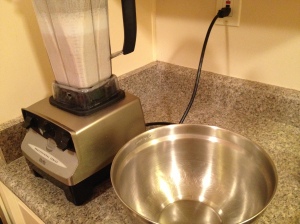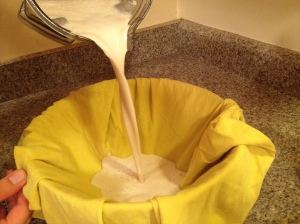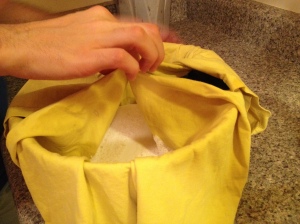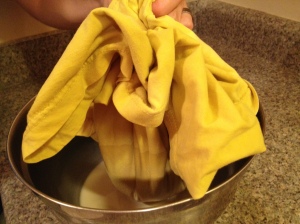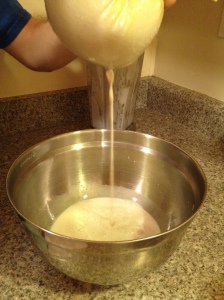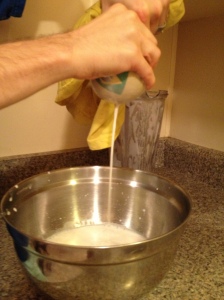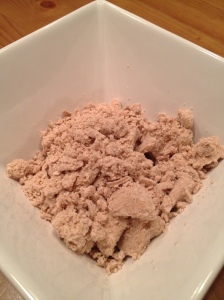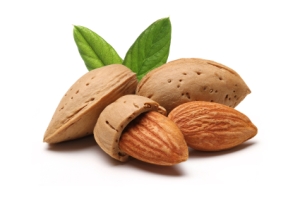Warning: In this post I freely and openly explore the concept of profanity. If you are offended by this, check back next week!
Miss Suzie had a steamboat
The steamboat had a bell (ding! ding!)
Miss Suzie went to heaven
The steamboat went to HELL-
-O operator…
Saying bad words can be fun. Cathartic. Offensive. Funny. Disrespectful. Let’s talk about it!
I must admit, I swear more than I should. Stub my toe? FUCK! Accidentally put too much pepper in the soup? SHIT! Sometimes I don’t even notice the words coming out.
Not too long ago Simon, Ellis and I were shopping at Trader Joe’s, and Ellis went straight to grab a mini shopping cart to push around. As he barreled past, the tall stick attached to his cart smacked me in the face without warning, knocking off my glasses. Without thinking I instinctively blurted out FUCK! to the shock and horror of all the families standing nearby. Simon looked back at me with a face that said “seriously, Robbie?” Embarrassed and ashamed, all I could do was smile awkwardly and try to remove myself from the situation while mouthing “I’m sorry!”
As a father, I have reflected frequently on profanity’s role in society, the family, and the individual. But at this point, I’m still full of questions about how to address the subject with my son. Obviously I don’t want him dropping F-bombs around the playground, but does it make sense to try to censor all profanity from his world to prevent that? If a great song has one or two bad words, do I really need to eliminate it from our playlists or do we resort to doing “earmuffs” while Ellis is around? Won’t he hear that stuff in school anyway? Can I say “crap” instead of “shit,” or is that bad too? At what age is it acceptable for a kid to say “that sucks” or call someone an “ass?” Is there a place for milder versions of bad words or should all profanity be prohibited? I really don’t know, and I’m on my journey to find out.
From the start of spoken language, humans have had words that were considered offensive, disrespectful or blasphemous. From nasty words for body parts to saying G*d’s name in vain, all languages have an immense arsenal of offensive words. But what makes a word “bad”? After all, it’s just a word!
While offensive to some, bad words can be hilarious. Consider the immensely popular “children’s book” entitled Go the Fuck to Sleep. It is a New York Times best seller and a total crackup. Here’s a page from the book.
Or how about the delightfully uncouth “censored” version of Disney’s Frozen. Featured on Jimmy Kimmel, this video censors innocuous words from the film, letting our dirty minds fill in the blanks. There are also “censored” versions of Sesame Street, Barney and others.
As funny as bad words can be, there’s a time and a place for profanity. It can add humor and expression to a situation. It can help us express our frustration or pain. It can also be a tool to spew hatred and negativity. It all depends on who’s talking, who’s listening, and the energy behind the word. But as a general rule: Not in public, not in front of children, and definitely not in front of your teacher.
Once a student of mine was angry and defiant when I told him to remove a black wristband with the word FUCK in bold white letters. “Come on, it’s just a word, who cares!” Clearly lacking his full frontal lobe and desperately pushing the limits for attention, I had to pull him aside to succinctly break it down for him.
When I was a little kid, I had a swearing problem. I’m not sure exactly what I would say, but my profanity was so frequent that my mom started to carry around a bottle of Tabasco sauce to punish me. Perhaps she chose the wrong discipline technique, because now hot sauce is one of my greatest pleasures in life… So yeah, I wonder why I like to swear so much… Thanks, Mom!
Often children go through a stage where they develop a “potty mouth,” talking constantly about poop, pee, farts, butts, buttholes, etc. What’s a parent to do? My mom has a friend who only allows her grandson to use those words in the bathroom, and he often stays in there extra long just to repeat those words without getting in trouble. To me, it’s not a bad compromise—he’s learning to recognize there is a time and a place for foul language, and he’s letting off some frustration at the same time! I just hope it doesn’t have a Pavlov’s dog effect and make him angry every time he has to poop. That would be shitty.
Swearing can be funny because it makes people feel awkward and uncomfortable (not that that is always a good thing). Children are notorious for getting a laugh out of the forbidden nature of cuss words. Exhibit A: “the penis game.” Never played? Oh, you’ve been missing out! The game consists of people, usually middle-schoolers, taking turns saying the word “penis” louder and louder until one of them gets in trouble or is unwilling to continue. Go ahead, give it a try today at your public library, bank or place of work!
What about the Pen 15 club? Don’t you want to become a member? All you have to do is let me write PEN 15 on your hand. But don’t be surprised later when your dad asks why you have PENIS written on you in black Sharpie. Oh, middle school…

Innocent little Kristy asking a question in Mrs. Kelly’s 8th grade language arts class… She has no idea.
And then there’s the classic rhyme about “Miss Susie” that goes with a hand clapping game. Kids get a thrill out of almost saying “hell,” “ass,” etc. I’m pretty sure I started chanting that at age five…
“Miss Susie had a steamboat,
the steamboat had a bell.
Miss Susie went to heaven
and the steamboat went to Hell–
O, operator,
Please give me number nine
And if you disconnect me
I’ll kick your be–
’hind the ’frigerator,
there was a piece of glass
Miss Susie sat upon it
and broke her little
Ask me no more questions,
Tell me no more lies,
The boys are in the bathroom
zipping up their
Flies are in the meadow
The bees are in the park
Miss Susie and her boyfriend
are kissing in the
D-A-R-K
D-A-R-K
D-A-R-K
Dark, dark, dark”
Swearing can be so much fun that it even inspires us to learn how to be offensive in other languages! Besides, who needs to know how to order food, ask for the restroom or call for help when insulting someone’s mother is so much more useful!
Translating profanity from foreign languages can be a bizarre and perplexing exercise. For example, who knew calling someone ‘“big goat” (cabrón) in Mexico could incite an aggressive altercation? The insult goes back to the concept of a “cuckold,” a man who has grown horns because his wife is unfaithful. The symbolism of the horns is explained here: http://en.wikipedia.org/wiki/Cuckold
In Mexican Spanish, even the word madre or “mother” can be vulgar. Taking it far beyond “yo momma” jokes, Mexicans have so many vulgar expressions containing the word madre that the word itself is often considered profane. If something “smells like mothers” or “huele a madres,” it means it smells like shit. Of if you say “me vale madre,” which literally means “it’s worth a mother to me,” you’re really saying “I don’t give a shit.” But remember, while madre is vulgar and to be avoided, padre (father) means “cool” or “awesome.” Gotta love the patriarchy!
As a high school Spanish teacher, I had my advanced classes list all the bad words they had heard in Spanish. Then I explained each word without translating them into English. Don’t call me a bad influence, I am an educator! After all, no one wants to be the clueless “gringo” smiling obliviously when someone calls them a “pinche puto.” Knowledge is power, baby. Knowledge is power.
If you’re uncultured and immature like me, here’s a website full of profane words in foreign languages: http://www.youswear.com/ Go forth, and be a citizen of the world! And don’t blame me if you get your ass kicked.
Even if you speak the same language as someone, don’t expect to find the same words offensive. Between UK and US English, or Spanish from different Spanish speaking countries, misusing a common word can turn into a hilarious misunderstanding or a situation of gross disrespect. For example, in the UK and Australia, “fanny” is a foul word for vagina. So please don’t ask where you can purchase a fanny pack while you’re in Melbourne. At the same time, don’t have a heart attack if a Londoner asks if you have any extra “fags,” because he’s just asking for a cigarette.
In Spain, the word coger means to grab, pick up, or grasp. “Coger el telefono” (to pick up the phone) or “coger frutas” (to pick fruit) sound quite different in Latin America, where the word means “to fuck” (sexually).
Instead of using full-fledged profanity, most people, especially around children, use milder versions of these colorful words, called “minced oaths.”
Examples of these euphemisms include darn, gosh, jeez, crap, freaking, etc. These can be especially fun and creative, like “shut the front door!” or “H-E double hockey sticks!” My sister is famous her constant and creative usage of the word “fezie,” as in, “What the fezie!” or “Holy fezie!”
Minced oaths even exist in other languages. “Híjole” is an abbreviation of “hijo de puta” or “son of a bitch,” effectively making it the Mexican version of “son of a!” Similarly, “ostras” meaning “oysters” is a non-offensive version of “Hostia” which comes from the incredibly offensive Spanish expression “Me cago en la Hostia,” or “I shit on the holy Host.”
When it comes to small children, which words are off-limits? How does that change depending on age? What about minced oaths? Hearing a kid swear or even “fake” swear can be shocking and embarrassing for the parents. Even hearing a child say “this sucks” can be unsettling. Or what if they say, “Are you effing serious?” Oh hail no.
So does that mean I can’t say anything remotely naughty? If I can’t shout “CRAP!” when I stub my toe or say “oh my gosh!” when I’m surprised, what can I say?
I really have no idea what naughty words are acceptable at what age. Heck, so many minced oaths don’t even seem bad to me anymore. I guess it’s up to each family to figure that out as they go along. That’s what parenting is all about.
Clearly we can’t shelter kids forever. Many tweens and adolescents associate profanity with being more adult and therefore cool (not that adults are cool, ewww). In middle school, when I was cooler than the world, I started to swear incessantly, mindlessly inserting bad words into my speech instead of using more vivid, descriptive vocabulary. This became a habit lasting into adulthood, leading me to swear without even knowing I was doing it.
I think the bottom line is to be conscious of what we say and recognize how it could affect those around us. As adults we must be open with our children and always be ready to explain why something is inappropriate. If we consistently model good behavior and teach our kids the cultural rules and roles for profanity, we can all have fun with language without getting into too much trouble.
All in all, whether we curse like sailors or think “jeepers” is profane, it’s important to be careful with our words and be sensitive to others.
What are your thoughts on the topic of profanity? Parents and non-parents alike, please share your thoughts, comments and personal experiences below!












